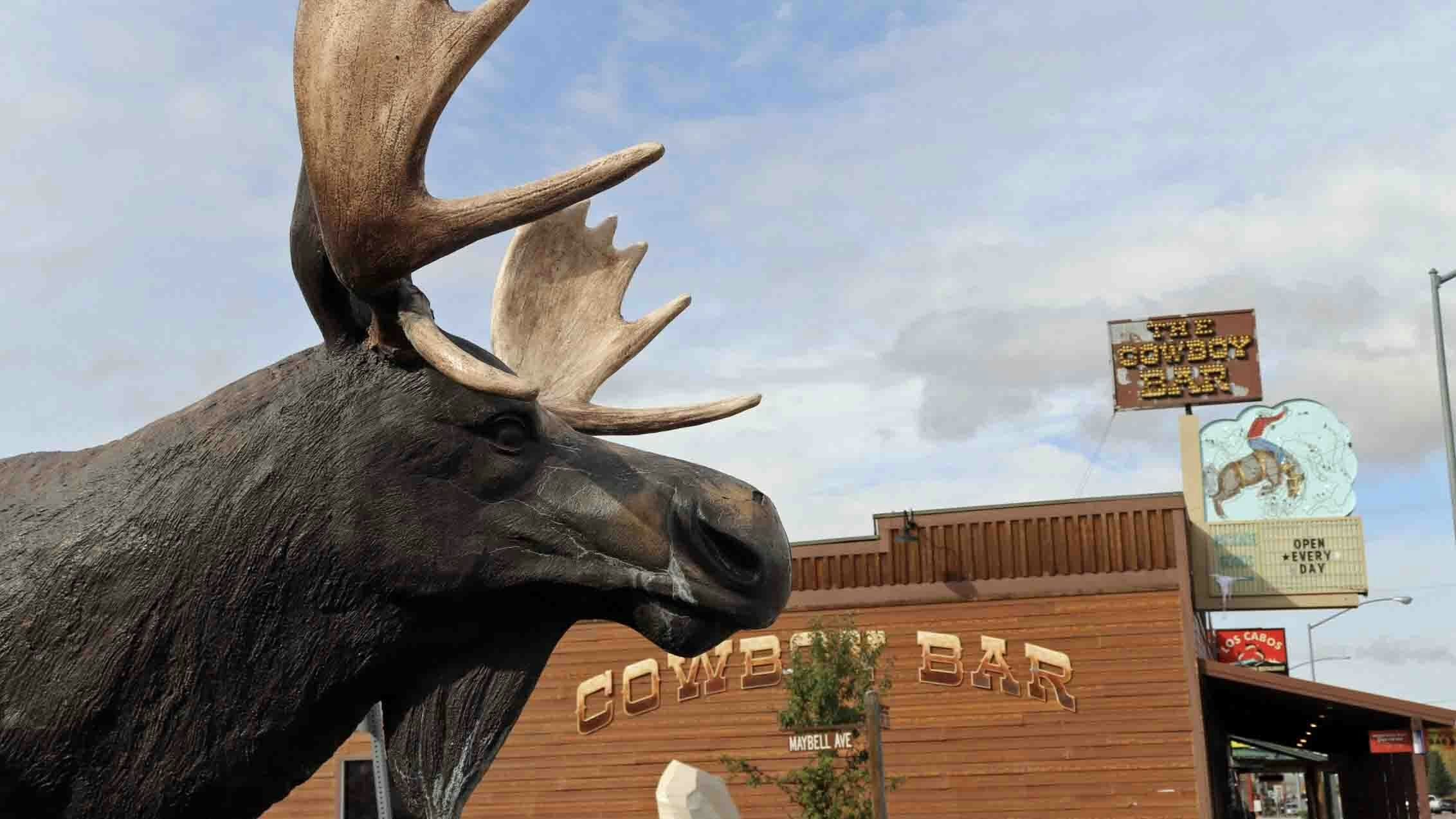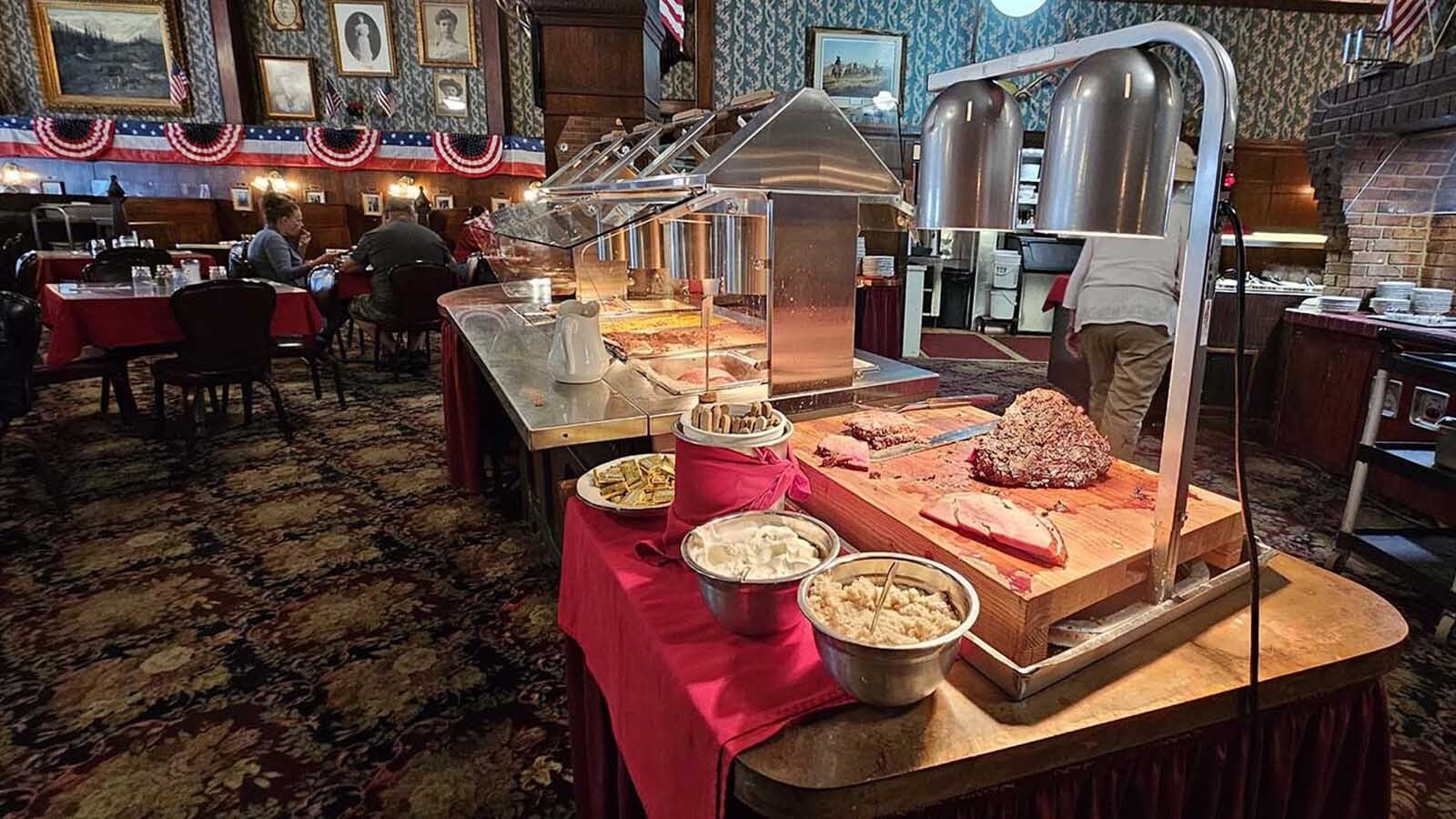Billionaire Joe Ricketts’ recently canceled Homestead Resort is not the only development that’s popped up in the middle of the 150-mile long mule deer migration corridor that passes through Pinedale.
There are two other developments set to appear in that same wildlife corridor used by mule deer to travel between the Red Desert and the Hoback Basin.
One of the two developments is a 51-lot subdivision on 299 acres on property located along Highway 191 at Cape Road and 40 Rod Road. The other is a 32,400-square-foot trauma therapy center for girls and young women, also located on Highway 191 about 30 minutes north of Pinedale, next to the Bridger Teton National Forest.
Both are owned by Melinda and Jason Moyes, and both were approved by Sublette County Commissioners in 2022.
The subdivision approval followed the recommendation of Sublette County’s Planning and Zoning Commission, but the trauma therapy center’s approval defied it.
Planning and Zoning Commissioners had unanimously recommended denying the conditional use permit for the trauma therapy center, according to documents file with Sublette County’s Planning & Zoning Office.
About The Sanctuary
While Sublette County Commissioners approved both projects, that hasn’t stopped citizens from asking questions about the developments, particularly the one called The Sanctuary.
Cowboy State Daily reached out to the Moyes to discuss The Sanctuary, but they did not respond to our inquiries.
According to a Website for The Sanctuary project, called Reclaiming Hope, The Sanctuary would offer cutting-edge, evidence-based trauma therapy from state-licensed clinicians in a “beautiful setting that cultivates healing for generations to come” for up to 32 girls ages 17 and under.
Fund-raising for the facility is already underway, according to the website, and donors of varying levels are sought to name parts of the facility.
For $35,000, donors gain the naming rights for the green house, or for $50,000 they can name the Ropes Course. The Recreational Plaza is going for $150,000, while the gym’s naming rights are $500,000.
A million dollars would buy the name for the kitchen and dining hall.
The website also says that the Moyes moved to Pinedale in 2020 “with a dream called ‘The Sanctuary,’” and says that they are in their “founding days as they are currently pouring their energy into developing plans for the lodge, establishing organizational policies and cultivating essential partnerships.”
Several donors are listed at the site, who also talk about the project.
“From the first time I heard about the vision God had given Melinda and Jason for The Sanctuary, I have been 100% committed to help them see this dream come to fruition,” a woman identified as Dee M. is quoted as saying. “I have been amazed by the way their paths have crossed with countless people who have a deeply personal understanding of the need for a place like The Sanctuary — where true healing can take place.”
Location, Location, Location
A treatment or therapy center is a good thing for the area, Pinedale resident Mike Crosson, who was also formerly Sublette County’s attorney, told Cowboy State Daily.
But he is deeply troubled by its location in an area he’d like to see remain wild.
“The problem here is our county commissioners aren’t abiding by the spirit of our county master plans,” he said. “There are things like wildlife considerations, and open space, and preserving agriculture. These are things they continually disregard with these big projects throughout the county instead of focusing on keeping development close to developed areas.”
As Crosson sees it, some county commissioners have been rubber-stamping economic development projects, lured by the promise of jobs and-or housing in a county that needs both.
Crosson isn’t opposed to economic development. But he wants to see it follow the county’s master plan.
“What frustrates me on a personal level is, I think we’re one of the last counties in the nation that has a chance to get it right, and we’re not doing it,” he said. “We can (keep Sublette County) in a rural setting for a long time into the future if we play our cards right with planning and zoning, but not if we continue to allow large-scale, willy-nilly development of any kind.
“It’s going to eat up our county and we’re going to lose everything that is valued by so many of us here — the wildlife, the open space, the peace and quiet, the lack of hustle and bustle.”
Impractical In Winter
His wife, Tami, sees the location itself as impractical, outside of any planning and zoning considerations.
“I think the idea is a great concept,” she said. “For maybe two months out of the year. But that area up there is very dangerous in the winter. I mean, it’s dangerous for animals up there. You won’t find many that can survive up there, because the wind blows and there’s, like, 4 feet of snow on average. You can’t even see the top of the fence posts.”
That’s a dangerous situation for anyone traveling to or from the facility, as she sees it.
She also wonders where the center will get the licensed medical professionals it needs to staff up.
“I know he thinks he’s going to bring them here,” she said. “But we can’t keep our clinic staffed with doctors. So, I just don’t know. Maybe he’s not aware of that, but I think it will be very difficult to staff that.”
Given those factors, she wonders how long such a center will be viable in that location, and wonders what will happen if the project is built, but then ultimately abandoned.
“(That’s) a beautiful area that should be kept wild,” she said. “Mr. Moyes has many properties here in Pinedale, right next to the town, that would probably be better suited for such a thing.”
What About The Wildlife
One outspoken critic of The Sanctuary is Joshua W.D. Coursey, president and CEO of the Muley Fanatic Foundation, an organization that works to conserve mule deer and preserve their habitat.
Coursey was among several citizens who wrote emails and letters to county officials in 2022, outling objections for developments that build in important wildlife areas.
“Developments are the largest driver of land use change in North America,” he wrote. “And poorly sited construction projects can have significant impacts on wildlife, high-priority habitats and sensitive migration corridors, all of which are found within this proposed development.
“This particular landscape falls within the most notable mule deer migration corridor documented and is home to the most iconic mule deer herd on the North American continent. This truly is a national treasure.”
Studies of Sublette mule deer have already highlighted a 36% decline in mule deer abundance near developments, Coursey continued.
“We can do our part to mitigate these declines by learning from our past decisions and ensuring that we are being mindful of the long-term impacts decisions like this can have for the days ahead,” he said. “The continued requests to change zoning classifications will not stop. Wyoming is a hot commodity, and a large part of what makes Wyoming so desirable is our wildlife and wide-open spaces.”
That makes prioritizing wildlife important for the future on multiple levels, he suggested.
Winter Dangers
The location of the facility is something that concerns Sublette County Commissioner Doug Vickery, too, mainly because of safety issues for its residents.
“I guess the migration corridor could be somewhat of a concern,” he said. “But to be quite honest, I think we have a tendency to use a migration corridor to — I’m trying to figure out how to say it nicely — we use it as a crutch in some instances, where it might not be quite that big a deal.”
Vickery said while there’s some migration going through the area, most of it occurs more to the west and south.
“They’ve got enough property there to mitigate that,” he said. “I’m not a great fan of what’s going to happen up there. But that will ultimately be determined by the folks who, once that thing is up and running, the folks who decide they want to have their kids in that sanctuary.”
As a parent, Vickery said he himself would be concerned about the safety factors with travel to and from the facility, particularly during the winter.
“On a normal year, you can’t see the fences along that highway,” he said. “So, this past year, it wasn’t like that. We had somewhat of a down year for snow. But normally, there’d be a full flow of snow on top of that rim, and then you have wind to take into consideration.”
Wind can cause snow drifts that are much deeper than average snowfall.
That makes traveling to and from that area something of a wild card, Vickery suggested.
“There may be a very big need for a facility like that (here),” Vickery said. “But that place up there, once they get it up and running, and once they put in a winter or two that’s more normal than last year, the realization will hit that, hey, this might not be the best place in the world for this.”
The travel situation could also put the center in a situation where, if there’s an alteration and they need emergency services like fire, health or EMS, they’re out of luck.
“It may be weather-dictated that, hey we can’t get there,” Vickery said. “Or we’re going have to be an hour later getting there, until we get the roads open.”
Renée Jean can be reached at renee@cowboystatedaily.com.





